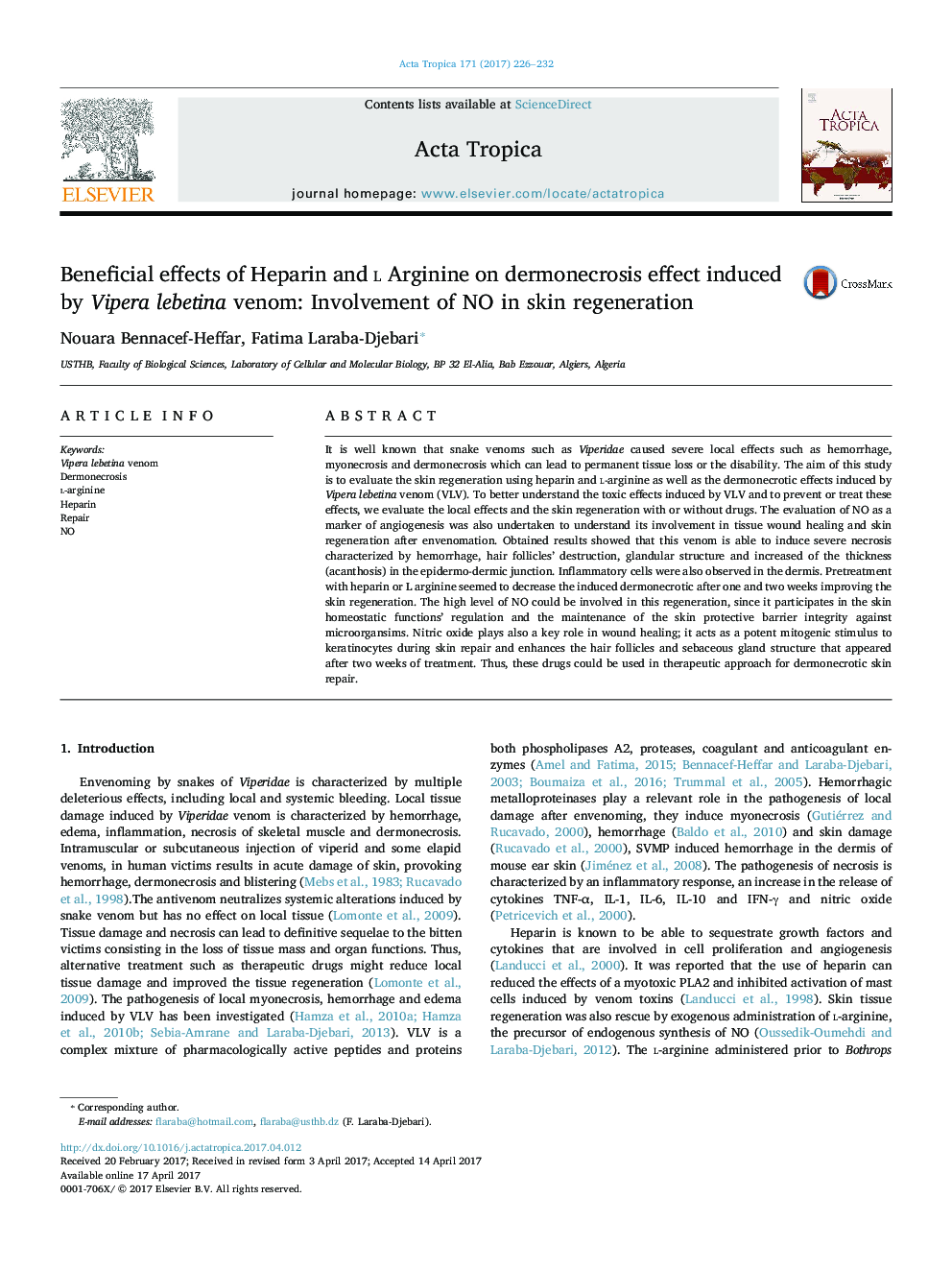| Article ID | Journal | Published Year | Pages | File Type |
|---|---|---|---|---|
| 5671183 | Acta Tropica | 2017 | 7 Pages |
â¢Dermonecrosis and skin regeneration.â¢Involvement of NO on skin repair.â¢Decrease of the induced necrosis.
It is well known that snake venoms such as Viperidae caused severe local effects such as hemorrhage, myonecrosis and dermonecrosis which can lead to permanent tissue loss or the disability. The aim of this study is to evaluate the skin regeneration using heparin and l-arginine as well as the dermonecrotic effects induced by Vipera lebetina venom (VLV). To better understand the toxic effects induced by VLV and to prevent or treat these effects, we evaluate the local effects and the skin regeneration with or without drugs. The evaluation of NO as a marker of angiogenesis was also undertaken to understand its involvement in tissue wound healing and skin regeneration after envenomation. Obtained results showed that this venom is able to induce severe necrosis characterized by hemorrhage, hair follicles' destruction, glandular structure and increased of the thickness (acanthosis) in the epidermo-dermic junction. Inflammatory cells were also observed in the dermis. Pretreatment with heparin or L arginine seemed to decrease the induced dermonecrotic after one and two weeks improving the skin regeneration. The high level of NO could be involved in this regeneration, since it participates in the skin homeostatic functions' regulation and the maintenance of the skin protective barrier integrity against microorgansims. Nitric oxide plays also a key role in wound healing; it acts as a potent mitogenic stimulus to keratinocytes during skin repair and enhances the hair follicles and sebaceous gland structure that appeared after two weeks of treatment. Thus, these drugs could be used in therapeutic approach for dermonecrotic skin repair.
